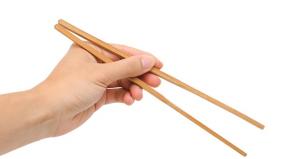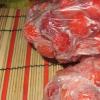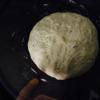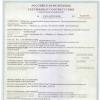Raw materials for the production of fittings. Production of composite reinforcement as a business. Composite reinforcement - a new stage in the development of construction in Russia
What is composite fiberglass reinforcement actually made of?


Maxim Vladimirovich Klimenko, General Director of LLC "Obninsk Plant of Composite Materials" answers:
"Good afternoon. Firstly, I want to note right away that the products of Obninsk Composite Materials Plant LLC have been produced for 3 years only from the best binding materials and foreign-made fiberglass.
We prioritize product quality, therefore contracts with world leaders for the production of raw materials for the production of composite materials. What is composite fiberglass reinforcement actually made of?
This is the main material in the production of composite fiberglass reinforcement. Jushi produces glass rovings based on modified silane lubricants No. 386 and No. 312, which are specially developed and successfully used in the production of composite fiberglass products by pultrusion.
Glass roving manufactured by Jushi is currently the highest quality product on the fiberglass market. It withstands huge breaking loads, surpassing competitors by several times. Obninsk Plant of Composite Materials is the main consumer of Jushi fiberglass in Russia and we have a contract for the supply of glass roving.
Epoxy resin is the main polymer used in the production of fiberglass reinforcement. For the production of fiberglass by pultrusion, including the production of composite fiberglass reinforcement, supports - peg for plants and other products, we use high-quality CYD 128 epoxy resins, manufactured by Sinopec (China) and KER 828 epoxy resins, produced by the South Korean brand Kumho. The Obninsk Plant of Composite Materials also has long-term contracts with these companies for the supply of epoxy resins.
IMTHFA (Isomethyltetrahydrophthalic anhydride) is the main hardener in the production of fiberglass reinforcement. IMTGFA is ideal for high temperature curing of epoxy resins. The production of fiberglass reinforcement takes place at high temperatures in special furnaces, the temperature reaches 340C. Therefore, when using IMTHFA, composite products acquire excellent physical and mechanical properties and high strength characteristics.
Catalyst is a special compound that combines the properties of Diethylene Glycol Diglycidyl Ether (DEG-1) and Alcofen (DMP). When these components are used, the final product acquires high chemical resistance properties."

Fiberglass rebar is a building material made from glass roving bonded with an epoxy compound based on thermosetting resins. The main feature is lightness, the mass index per unit volume is only 2g/mm³. It is more convenient and economically feasible to work with fiberglass reinforcement than with metal reinforcement. Significantly less logistics and direct reinforcement costs are required.





In addition, due to the fact that fiberglass does not react to an aggressive environment, therefore, reinforcement protects concrete from premature destruction, thereby increasing the service life of the object. Fiberglass reinforcement reacts to temperature changes in the same way as concrete, which is also well reflected in the strength of the structure.
The strength of fiberglass in comparison with metal is 2.5 times higher. With all this, the thermal conductivity index is 100 times lower than the thermal conductivity index of steel. Therefore, a structure reinforced with fiberglass does not freeze through (does not form “cold bridges”) and an object built using fiberglass will be warmer than a building based on metal reinforcement. This allows you to reduce heating costs, and therefore the material is actively used in the construction of modern energy-efficient buildings.
Another undeniable advantage that may be of interest to builders is the fact that fiberglass is a surprisingly durable material that can do without additional repairs for 100 years after installation. This is what fiberglass reinforcement for the foundation is famous for.
Fiberglass reinforcement has found its application in many areas of industry, construction, utilities:
- in construction, it is used in the construction of civil and industrial construction projects as a basis for foundations, floors, beams, as well as in the construction of seismic belts;
- in the construction and repair of roads, reinforcement is used in the arrangement of embankments, roadbeds, in the construction of bridges and highway barriers. It is resistant to the effects of reagents that are applied to road surfaces (for example, anti-icing reagents), so it can be used both in Moscow and in colder regions.

Fiberglass reinforcement will be an ideal basis for concrete and brick structures. It is used in the creation of supports for power lines and lighting, in the construction of road, paving and fence slabs, as well as in the construction of sleepers on railway tracks. Reinforcement for ceilings, where a mesh of reinforcement is used, even together with a metal one, has received wide use.
Fiberglass is applicable in such building structures as a monolithic foundation and foam concrete. It is also actively used in the creation of structures that must have increased resistance to chemicals, for example:
- during the construction of storage facilities for chemical waste and components;
- in the arrangement of sewerage, water pipes, melioration systems;
- in the construction of port facilities and in the strengthening of coastlines.
Despite the uniqueness of the product, the price of fiberglass reinforcement in Moscow, which is indicated on our website, is an affordable material for both construction organizations and individuals. Its cost is 40-50% lower than the cost of steel reinforcement, which allows you to significantly reduce costs and at the same time improve the quality of the objects under construction. In general, composite reinforcement can be called one of the most reliable and efficient building materials of our time.
This reinforcement is made of straight strands of glass or basalt fibers (ASP and ABP, respectively), which are assembled into a bundle, impregnated with a thermosetting polymer binder, molded, heated (polymerized) and cooled. The result is a high-strength monolithic rod, which, according to test results, is 3 times higher than the tensile strength of steel, and the weight, in an equal strength ratio, is 9 times less.
Standardly manufactured in the form of rods of any length, at the request of the customer. With a diameter of up to 8 mm inclusive, it can be made in the form of coils (coils) containing 100 meters of reinforcement. Overall dimensions of the bay: height - up to 8 cm, diameter - up to 1 meter.

release form
With a diameter of 10 mm and 12 mm, it can be made in the form of coils (bay fittings) having a length of 50 meters. Overall dimensions of the bay: height - up to 5 cm, diameter - up to 1.5 meters.
By agreement with the customer, it is possible to manufacture rods and coils of any length.
It can be made with a smooth, building, periodic profile:
- ASP-ABP of a periodic profile, used instead of steel reinforcement of class A-III (A-400);
- ASP-ABP smooth profile, used instead of steel reinforcement class A-I (A-240).
Fiberglass rebar is becoming more and more popular and its use is becoming more and more relevant every year, because it is a full-fledged replacement for traditional steel bars of different grades. High strength indicators, optimal performance properties, low specific weight and low price are the factors that determine the popularity of the use of non-metallic reinforcing elements in all areas of construction.
Interest in non-metallic fittings arose in the middle of the 20th century due to a number of circumstances. The use of reinforced concrete structures has expanded in critical structures operated in highly aggressive environments, where it was difficult to ensure the corrosion resistance of steel reinforcement. There was a need to ensure the antimagnetic and dielectric properties of some products and structures. And, finally, it was necessary to take into account the limited supply of ores suitable for steel production and always in short supply of alloying additives. A practical solution to this problem became possible due to the accelerated development of the chemical industry. In a number of technically developed countries (Germany, the Netherlands, the USSR, Japan, the USA, etc.), appropriate scientific research was begun.
Alkali-resistant glass fiber with a diameter of 10–15 μm was first adopted as the carrier base of high-strength non-metallic reinforcement, the bundle of which was combined into a monolithic rod using synthetic resins: epoxy, epoxyphenol, polyester, etc.
In the USSR (Minsk, Moscow, Kharkov) a continuous technology for the manufacture of such reinforcement with a diameter of 6 mm from alkali-resistant glass fiber of a low-zirconium composition of the Shch-15 ZhT grade was developed, and its physical and mechanical properties were studied in detail.
Particular attention was paid to the study of the chemical resistance and durability of fiberglass and reinforcement based on it in concrete when exposed to various aggressive environments. The possibility of obtaining glass-layer and forged reinforcement with the following indicators was revealed: tensile strength - up to 1500 MPa; initial modulus of elasticity - 50,000 MPa; density -1.8-2 t / m * with a glass fiber content of 80% (by weight); the working diagram in tension is straight up to the break (limiting
deformations by this moment reach 2.5-3%); long-term strength of reinforcement under normal temperature and humidity conditions - 65% of the tensile strength; linear expansion coefficient - 5.5-6.5 × 10 * 6
Experimental prestressed bending elements with such reinforcement under the influence of static loads were comprehensively studied, technological rules for the manufacture of reinforcement and recommendations for the design of concrete structures with non-metallic reinforcement were developed, and appropriate areas of their application were outlined.
Experimental samples of electrically insulating traverses of power transmission line supports were installed on experimental sections of power lines in Belarus, the RSFSR and Adjara. Studies have been carried out on the use of glass-reinforced plastic and forged fittings in contact network supports and in pressure pipes. Glass-plastic fittings have also found application in polymer concrete baths in electrolysis shops of non-ferrous metallurgy enterprises, in floor slabs in several mineral fertilizer warehouses.
Unfortunately, it was not possible to organize the factory production of fiberglass reinforcement; in small quantities, such fittings were manufactured at the laboratory facility of NTPO "Beletroynauka" in Minsk.
In recent years, the world began to pay more attention to the study of non-metallic reinforcement from basalt fiber, the production of which is less laborious, and the raw materials are quite affordable. It can be stated that at present the basic initial data for the industrial production of fiberglass reinforcement, the design and manufacture of various prestressed structures with such reinforcement have been developed, and the areas of their application have been outlined.
In Germany, fiberglass reinforcement with a diameter of 7.5 mm from aluminoborosilicate fiberglass and polyester resin called "polysteel" has been developed and studied in detail. Tests for static, dynamic and continuous loads made it possible to establish the following initial characteristics of this reinforcement; short-term tensile strength - 1650 MPa; modulus of elasticity - 51000 MPa; elongation at break - 3.3% long-term strength - 1100 MPa; stress losses from relaxation - 32%; stress drop4 at 2*106 loading cycles - 55 MPa; thermal expansion coefficient — 7×10*6
After testing the experimental beams, the main provisions for the calculation and design of critical engineering structures were developed. In recent years, ten one-, two- and three-span road and pedestrian bridges with polystal reinforcement have been built. The spans of bridges, reaching 25 m, were reinforced with bundles of glass-plastic rods with a diameter of 7.5 mm with tension on concrete. A protective polyamide coating 0.5 mm thick was applied to the rods. The number of rods in the bundle is 19, the working force of the bundle tension is 600 kN.
Particular attention is paid to the development of the problem of creating and using high-strength non-metallic reinforcement in Japan. The production of fiber-reinforced plastic reinforcement based on carbon and aramid fibers has been mastered, their physical and mechanical properties have been studied. Wire and ropes are made of carbon fiber with a diameter of 7 microns with a tensile strength of 3600 MPa. The wire is assembled from 12 thousand fibers interconnected by plastic. Ropes of various bearing capacity are twisted from wire, subjected to heat treatment after twisting.
A promising assortment of reinforcement has been developed, which includes wire, as well as 7-, 9- and 37-shaft wire ropes with a force of 10 to 100 kN. For example, the characteristics of 7-wire carbon-plastic ropes have been established: tensile strength - 1750 MPa; modulus of elasticity - 140,000 MPa; elongation at break - 1.6%; density - 1.5 t/m3; stress relaxation - 2.5%; heat resistance - 200 JC; high acid and alkaline bone.
A reinforcement made of aramid fibers with a diameter of 3 to 16 mm with a breaking force of 8 * 250 kN has been developed. The rods are obtained by interlacing bundles of continuous fibers, followed by impregnation with plastic and heat treatment. The limiting elongation of the reinforcement at break is 2%, the modulus of elasticity is 66,000 MPa. It should be noted that this reinforcement of small diameters (up to 5 mm) is suitable for transverse spiral reinforcement of structures. A
In Japan, a significant set of studies of experimental beam structures with various types of non-metallic reinforcement has been carried out, automobile and pedestrian bridges of small spans have been erected. Active research is underway on the possibility of using carbon fiber reinforcement in various areas of construction. Thus, high-strength tapes of various cross-sections made of carbon fiber began to be used to reinforce reinforced concrete structures in critical structures in operation.
It should be noted the pioneering work performed in the Netherlands with non-metallic reinforcement made of aramid fibers. The accumulated material on the properties of such rectangular and circular reinforcement was first reported at the FIB congress in 1986 and aroused great interest. Later, in the same country, a composite wire with a diameter of 5 mm was developed from carbon fibers and an epoxy binder. The tensile strength of the wire ranges from 2300 to 3300 MPa, depending on the strength of the fiber and the proportion of its content in the cross section. The production of such wire has been mastered and experience has been gained in its use as prestressing reinforcement in piles. The prospects of using bundles of composite wire in the cables of long-span bridges and for external reinforcement of various prestressed structures are noted.
A large experiment was carried out by scientists from the USA and Canada on one span of a prestressed girder road bridge reinforced with Japanese-made carbon fiber wire and ropes. The use of modern measuring systems and the continuation of testing until destruction made it possible to obtain an extensive set of data necessary for a positive assessment of bridges with such reinforcement.
The constant growth in the number of publications on high-strength non-metallic reinforcement and the active work of the FIB commission on this topic confirm the promise of this material for prestressed reinforced concrete and the need for a more attentive attitude to this problem in the world. \
2.Historical development and experience of using composite reinforcement in the USSR, Russia and abroad
Interest in non-metallic fittings arose in the middle of the 20th century due to a number of circumstances. The use of reinforced concrete structures has expanded in critical structures operated in highly aggressive environments, where it was difficult to ensure the corrosion resistance of steel reinforcement. There was a need to ensure the antimagnetic and dielectric properties of some products and structures.
And finally, one must take into account in the future the limited supply of ores suitable for satisfying the continuously growing demand for steel and always in short supply of alloying additives.
At first, a continuous alkali-resistant glass fiber with a diameter of 10-15 microns was taken as the carrier base of the developed high-strength non-metallic reinforcement, the bundle of which was combined into a monolithic rod using synthetic resins (epoxy, epoxyphenol, polyester, etc.).
In the USSR (Minsk, Moscow, Kharkov) a continuous technology for the manufacture of such reinforcement with a diameter of 6 mm from alkali-resistant glass fiber of a low-zirconium composition of the Shch-15 ZhT grade was developed, and its physical and mechanical properties were studied in detail.
Particular attention was paid to the study of the chemical resistance and durability of fiberglass and reinforcement based on it in concrete in various aggressive environments. The possibility of obtaining fiberglass reinforcement with the following indicators was revealed: tensile strength up to 1500 MPa, initial modulus of elasticity 50,000 MPa, density 1.8-2 t/m the torque reaches 2.5-3%, the long-term strength of the reinforcement under normal temperature and humidity conditions is 65% of the temporary resistance, the coefficient of linear expansion is 5.5-6.5 × 10 * 6.
Experimental prestressed bending elements with such reinforcement under the influence of static loads were comprehensively investigated, technological rules for the manufacture of reinforcement and recommendations for the design of concrete structures with non-metallic reinforcement were developed, and expedient areas of their application were outlined.
Experimental samples of electrically insulating traverses of power transmission line supports were developed, manufactured copies were installed on experimental sections of power lines in Belarus, Russia and Adjara. Studies have been carried out on the use of fiberglass reinforcement in the supports of the contact network and in pressure pipes. Stacks of plastic fittings have also found application in polymer concrete baths in electrolysis shops at non-ferrous metallurgy enterprises, in slabs in several mineral fertilizer warehouses.
Unfortunately, it was not possible to organize the factory production of fiberglass reinforcement at that time.
In the 70s of the XX century, non-metallic reinforcement was used in structures made of lightweight concrete (cellular concrete, wood concrete, etc.). as well as in foundations, piles, electrolysis baths, beams and crossbars of overpasses, supporting structures of capacitor banks, slope fixing plates, without insulating traverses and other structures.
In 1976, two mobile warehouses were built in the regions of Rogachev and Cherven. The load-bearing inclined elements of the upper belt of the arches are reinforced with four prestressed fiberglass rods 6 mm in diameter. The rods are located in two grooves with a section of 10×18 mm. items selected in the bottom plate. The supporting sections of the elements (in the ridge and support nodes) are reinforced with wooden overlays made of boards 20 mm thick.
Wood savings in load-bearing reinforced elements amounted to 22%. the cost was reduced by 9%, the mass of structures was reduced by 20%. The cost of construction compared to existing standard solutions for warehouses of the same capacity has decreased by 1.7 times.
At the acid station of the Svetlogorsk artificial fiber plant, the ceilings above the technological galleries are made of FAM polymer concrete with glass-reinforced plastic and wrought iron reinforcement. The slabs were reinforced with fiberglass rods 6 mm in diameter with prestressing of the ribs and the slab in the transverse direction. Distribution armature of the shelf is made without prestressing. The economic effect as a result of reducing the reduced costs per 1 m2 of flooring amounted to 57.95 rubles.
In 1969, the ISiA Gosstroy of the BSSR, together with the Selenergoproekt State Design Institution (Moscow), developed and investigated electrically insulating traverses for 10 kV power lines and 35 kV power lines.
In 1970 in the Kostroma region, a pilot section of a 10 kV power transmission line with fiberglass-concrete traverses was put into operation.
In 1972, an experimental section of a 35 kV power transmission line with electrically insulating glass-reinforced concrete traverses was put into operation in the Stavropol region. The traverse structure consisted of three prestressed fiberglass concrete elements (beams) connected by bolts on a steel plate, which was fixed with clamps on the top of the reinforced concrete support.
In 1975, in Grodno and Soligorsk, two experimental sections of a 10 kV power transmission line with fiberglass traverses were put into operation. The structure of the traverse is prefabricated, three-beam, consists of two rectilinear prestressed fiberglass concrete elements: a horizontal one, on which two wires are located, and a vertical one on top of which a third wire is attached. The prefabricated traverse is connected by the base of the vertical element to the reinforced concrete support of the power transmission line using steel clamps. Traverses are made of electrically insulating concrete. Reinforcement - four rods with a diameter of 6 mm in each element.
In 1979, in the area of Batumi, two experimental sections of power transmission towers for 0.4 and 10 kW were put into operation with traverses made of concrete polymer reinforced with fiberglass reinforcement with a diameter of 6 mm.
At the Ust-Kamenogorsk non-ferrous metallurgy plant, the production of prestressed electrolysis baths from FAM polymer concrete reinforced with fiberglass rods with a diameter of 6 mm has been mastered. Bath dimensions in terms of 1080×2300 mm, height 1650 mm, wall thickness 100 mm. The walls and bottom are reinforced with double symmetrical reinforcement with 200 mm spacing. The economic effect per bath without taking into account the costs associated with stopping production when replacing reinforced concrete baths is 1015.5 rubles.
In 1975, according to the project of the Department of Bridges and Tunnels of the Khabarovsk Polytechnic Institute, the construction of the world's first glued wooden bridge 9 m long was completed, the beams of which with a cross section of 20 × 60 cm were made of spruce wood and reinforced with four prestressed bundles of four fiberglass rods 4 mm in diameter.
The second bridge in the USSR with fiberglass reinforcement was built in 1981 in the Primorsky Territory across the river. Shkotovka. The superstructure of the bridge consists of six metal I-beams No. 45. prestressed with puffs of 12 fiberglass rods with a diameter of 6 mm. The beams are connected by a monolithic reinforced concrete slab of the roadway. The span structure has a length of 12 m, the dimensions of the carriageway and sidewalks are G8 + 2x1 m. The design loads are N-30, NK-80.
In the Khabarovsk Territory, a bridge using fiberglass reinforcement was built in 1989. In the cross section of the span, 15 m long, 5 ribbed beams without broadening in the lower zone were installed. The reinforcement of the beams of the span of the bridge was taken as combined: the creation of initial stresses in them was carried out by four bundles of 24 fiberglass rods with a diameter of 6 mm each and one typical bundle of steel wires. Reinforcement of beams with non-stressed reinforcement of classes A-I and A-ll was left unchanged.
Historical development of the use of composite reinforcement abroad
(based on materials from the US Concrete Institute)
The history of the development of FRP rebar can be traced back to the widespread use of composites after World War 2. In the aerospace industry, the benefits of the high strength and lightness of composite materials were widely recognized, and during the Cold War, advances in the aerospace and defense industries led to even greater use of composites. Further, in a rapidly developing economy, the United States needed inexpensive materials to meet consumer demand. The production of coaxially oriented fiber plastics has become a fast and economical method of forming parts with a constant cross-sectional profile, and composite plastics made from continuous fiber have been used to make golf clubs and fishing rods. However, it was not until the 1960s that these materials began to be seriously considered in the production of reinforced concrete reinforcement.
The proliferation of Federal Highway Systems in the 1950s exacerbated the need for year-round maintenance. The use of salts to remove ice from road bridges has become widespread. As a result, the main concern has been the use of steel reinforcement in such structures, as well as in structures subjected to long-term corrosive action of sea salt. Various protective coatings have been studied, including zinc coatings, electrostatic spray coatings, polymer concrete, epoxy coatings, and fiberglass rebar (ACI 440R). Of all the above, epoxy-coated steel rebar has proved to be the best solution, and has come to be used in aggressive corrosive conditions. The use of FRP reinforcement was not considered an effective solution due to its high cost and was not commercialized until the late 70s.
In 1983, the US Department of Transportation's first project, The Application of Composite Technology in Bridge Design and Construction, was established (Plecnik and Ahmad 1988).
Marshall-Vega Inc. led the initial development of fiberglass rebar in the USA. Initially, fiberglass rebar was considered an effective alternative to steel for polymer concrete due to incompatibility with the thermal expansion characteristics between polymer concrete and steel. In the late 70s, International Grating Inc. entered the North American FRP rebar market. Marshall-Vega and International Grating researched and developed FRP rebar until the 80s.
Fiberglass rods were used to build the deck of the Crowchild Bridge in Calgary, Alberta, Canada in 1997.
In the 1980s, there was a market demand for non-metallic fittings for a specific advanced technology. The greatest demand for electrical insulating fittings was for medical equipment for magnetic resonance imaging. FRP reinforcement has become the standard for this type of structure. Other uses for FRP rebar have become more well known and sought after, especially in breakwater structures, substation reactor foundations, airstrips, and electronics laboratories (Brown and Bartholomew 1996).
In the 1970s, problems began to grow in the United States associated with the deterioration of bridges due to corrosion caused by the action of chloride ions, the effect of which on steel reinforcement led to the rapid aging of bridges. (Boyle and Karbhari 1994). In addition, the discovery of corrosion in widely used epoxy-coated rebar has increased interest in alternative methods to avoid it. Once again, FRP reinforcement has come to be seen as the primary solution to the corrosion problems of bridge decks and other structures (Benmokrane et al. 1996)
Until the mid-1990s, FRP rebars were the most widely used in Japan. already then in the country there were more than 100 commercial projects with its application. Detailed information on designing with FRP has been included in JSCE's "Design and Build Guidelines" (1997). In Asia, China has recently become the largest consumer of composite rebar, using it in new structures ranging from bridge decks to underground works (Ye et al. 2003).
Glass plastic fittings used in the construction of a winery in British Columbia in 1998
The use of FRP reinforcement in Europe began in Germany with the construction of a road bridge in prestressed FRP in 1986 (Meier 1992). After the construction of the bridge, programs were launched in Europe to research and use FRR reinforcement. Within the framework of the European BRITEEURAM Project, "Fiber Composite Elements and Technology for the Application of Non-Metal Reinforcement", FRP materials were tested and analyzed from 1991 to 1996 (Taerwe 1997) . Later, EUROCRETE took the lead in a European program of research and demonstration projects.
Canadian civil engineers have developed application guidelines for FRP reinforcement for the Canadian Highway Bridge Design Code and built a series of demonstration projects. CFRP and GFRP rebar were used in the construction of the Headingley Bridge in Manitoba (Rizkalla 1997). In addition, during the construction of the bridge on Kent County Road No. 10, CFRP reinforcement was used to reinforce negative moment zones (Tadroset al. 1998).
During the construction of the Joffre Bridge across the Saint-Francois River, located in Sherbrooke. Quebec, CFRP rebar was used on the pressure plates, and GFRP rebar on the road barrier and pavement. The bridge, which was opened to traffic in December 1997, was equipped with fiber optic sensors integrated into the FRP reinforcement structure for remote deformation monitoring (Benmokrane et al. 2004). Canada remains the leader in the use of FRP rebar in bridge deck construction (Benmokrane et al. 2004).
In the US, widespread use of FRP rebar has been documented previously (ACI 440R). The use of GFRP reinforcement in the construction of MRI hospital room extensions is becoming ubiquitous. Composite rebar has also become a standard solution in industries such as port facilities, top mesh rebar for bridge decks, various prefabricated reinforced concrete products, ornamental and architectural concrete. Some of the largest projects include the Mayo Clinic Gonda Building in Rochester, Minnesota, the National Institutes of Health in Bethesda, Maryland for magnetic resonance imaging, the bridge in Potter County, Texas, and the bridge in Bettendorf, Iowa, for reinforcement. flooring (Nanni 2001).
GFRP rebar was used in the tunneling of the concrete wall that was required to be built after the tunnel boring machine, and has been widely used in the construction of many of the world's largest subways, including Asia (for example, Bangkok, Hong Kong and New Delhi) and Europe (for example , London and Berlin).
Source: ACI 440.1R-06 Guide for the Design and Construction of Structural Concrete Reinforced with FRP Bars. (Reported by ACI Committee 440).
Experience in the development and application of non-metallic reinforcement in Russia
2000s
At the initiative of the Moscow government, in 2000, research was resumed on the development of basalt-reinforced plastic reinforcement with increased durability. NIIZhB carries out work together with the Federal State Unitary Enterprise "NIC MATI" them. K.E. Tsiolkovsky and JSC "ASP" (Perm).
Two pilot plants have been developed and installed according to the traditional principle of pultrusion and according to the new beefinger technology. The latter technology provides a significantly higher productivity in the production of composite non-metallic basalt-plastic and fiberglass reinforcement, so this technology was chosen as the most promising.
Replacing steel reinforcement with non-metallic reinforcement eliminates damage to reinforced structures due to steel corrosion and destruction of the protective layer, and allows you to maintain the quality and appearance of structures during operation, reduce operating costs by increasing the overhaul period.
Non-metallic composite reinforcement (NCR) is recommended for use in concretes that are characterized by a reduced protective effect in relation to steel reinforcement:
- in concretes based on Portland cement with an alkali content of not more than 0.6%, it went to Portland cement, pozzolanic cement, mixed binders (gypsum-cement-pozzolanic, cements with low water demand, with a high content of active mineral additives);
- in monolithic concretes with chlorine-containing anti-frost additives that do not contain alkalis (calcium chloride XK, calcium nitrate-chloride NKhK, calcium nitrate-chloride with urea NKhKM, etc.);
- in large-pore concrete for drainage pipes, lightweight large-pore concrete, monolithic cellular concrete;
- for reinforcing structures exposed to aggressive chloride environments; paving slabs, road surfaces, etc.
The recommended area of application for NCA is the outer layer of three-layer panels and flexible connections, which allows to improve the appearance of the building (no rust drips) and increase the thermal performance of walls, as well as in layered walls with flexible connections.
An effective area of application for NSCs are structures exposed to leakage currents. With the receipt of experimental data for longer periods of testing, the improvement of the properties of ABP, the scope of non-metallic fittings can be expanded.
Based on the results of the survey of three spans of bridges, the supporting structures of which are prestressed with glass-plastic reinforcement, conclusions can be drawn;
- In the superstructures of experimental bridges made of glued wood (31 years of operation), composite span structure (25 years of operation) and span structure of fiberglass concrete (17 years of operation), the effect of ASP prestressing is preserved.
- The use of ASP as anchors in load-bearing structures based on epoxy resins is justified.
- Positive results are obtained by the use of non-metallic composite reinforcement in road and industrial-civil construction
3. Composite reinforcement - a new stage in the development of construction in Russia
The use of non-metallic composite reinforcement (NCR) in Russian construction began about ten years ago, and during this time it was used without a GOST describing it. Thanks to the efforts of companies producing composite reinforcement, it was finally developed and put into operation since 2014.
In 2003, the use of fiberglass composite reinforcement was allowed by SNiP 52-01 (in particular, it became possible to use it in reinforced concrete structures). The introduction of the new GOST 31938-2012 has raised the use of NCA in construction to a new level, will allow manufacturing companies to significantly improve its quality and even enter the world market with supply proposals.
Manufacturers are confident that the introduction of the new GOST 31938-2012 will lead to a significant expansion of the scope of non-metallic fittings. They hope that they will be able to increase sales volumes and, consequently, profits, as well as improve the quality of the products offered.
After Moscow, St. Petersburg, Novosibirsk and Krasnodar, which actively use it in construction, composite reinforcement will become popular in other Russian regions that need modern high-tech materials for the construction of residential buildings and industrial facilities. The introduction of GOST for NCA products will diversify the market, and consumers will have the opportunity to be convinced of the technological and economic efficiency of the use of composites.
4. Prospects for the use of composite reinforcement in concrete structures
A number of circumstances led to increased attention of specialists to non-metallic fittings. This interest arose in the middle of the 20th century. Since construction is carried out in various climatic conditions and for various needs, it was difficult to maintain the corrosion resistance of metal reinforcement. As a result, there was a need to use composite reinforcement, which has antimagnetic and dielectric properties. And of course, developing humanity needs to take into account the fact that ore reserves for the production of metal fittings are not unlimited and the use of artificially created material for the production of fittings has excellent prospects that rush into our future.
The appearance of composite reinforcement was not an accident, but a pattern. Due to the intensive development of the chemical industry in developed countries, the first non-metallic fittings appeared.
As the main material for the production of composite reinforcement, fiberglass is used, which is connected into one rod and fastened with synthetic resins. The new material was thoroughly tested, it was also examined for strength, elasticity, wear resistance, and it was subjected to various loads in harsh conditions. The studies exceeded all expectations, the material turned out to be sufficiently resistant to various kinds of influences.
Scientists have developed a technology for the production of high-quality non-metallic reinforcement, recommendations for the design of concrete structures using non-metallic reinforcement, indicated the most acceptable areas for its application.
In a number of Western countries, non-metallic fittings are used much more widely than in Russia and the countries of the former Soviet Union.
For example, in Germany, fiberglass reinforcement has now been developed and studied in detail, otherwise it is called "Polistal *". Designers have developed projects of bridges, during the construction of which it is possible to use such reinforcement. Over the past few years, more than ten pedestrian and road bridges have been designed and built using such reinforcement.
Composite rebar is a particularly significant invention for Japan. Since here, when designing buildings, seismic areas must be taken into account. This country produces fibroplastic reinforcement based on carbon and aramid fibers. These are very strong and rather elastic rods that are used for the construction of buildings.
Prospects for the production of reinforcement and its application in various areas of construction are expanding. A better and more reliable material is produced that will withstand many destructive factors, such as water, ultraviolet, electricity.
In Japan, the possibility of using non-metallic reinforcement in various structures is being especially actively explored. Automobile and pedestrian bridges are being built here, and this reinforcement is also used to reinforce various concrete structures.
In the Netherlands, work is also underway to create a new generation of fittings. It is worth noting that in this country a composite wire was created from carbon fibers bonded with epoxy. The prospect of using such wire in the production of ropes to support more flying bridges is already close. It will also be used for external reinforcement of prestressed structures.
In recent years, other developed countries, such as Canada, France, have become interested in developments in the field of production and use of non-metallic fittings. USA. and many others.
The number of materials and publications on this topic has increased significantly, research is underway and the properties of such a material as composite reinforcement are being studied. Therefore, the prospect of using it in construction is very significant, and the study of this material in Russia and the CIS is being carried out in an enhanced mode in order to keep up with other developed countries.
5. Market dynamics of composite reinforcement
The information concerns the dynamics of the composite reinforcement market development over the past 2 years. After reviewing the statistics of Yandex and Google services, we can conclude that there is a significant increase in user interest in such a product as fiberglass or composite reinforcement. For example, let's look at the chart of the Yandex statistics service, where you can see the dynamics of the growth of requests containing the words "fiberglass reinforcement". Those. these are all queries like “buy fiberglass reinforcement”, “fiberglass reinforcement reviews”, “equipment for the production of glass-plastic reinforcement”, etc.
Below the graph are the absolute values for this query. For example, in June 2012 there were only 11,605 such requests, and a year later, in June 2013, there were already 25,227. the increase was 217%. At the same time, in both years, the peak of requests falls on the summer months.
For comparison, let's look at the data obtained by analyzing the statistics provided by the Google service. The red color on the graph shows statistics on queries containing the phrase "fiberglass reinforcement", there are more requests for it, and in blue the statistics for the phrase "composite reinforcement", these queries are less popular, but their dynamics is similar. Beginning around the second half of 2011 and subsequent rapid growth.
Below we will see a couple more images with information that is interesting enough for analysis. The first image is a map of Russia with regions marked on it in different colors. From gray and yellow to red, the intensity of requests in this region changes. The map shows a slice of data for June 2013.
To understand this image, let's look at a short table showing the regional popularity of queries containing the phrase "fiberglass reinforcement".
Regional popularity is the share that a region occupies in impressions for a given phrase, divided by the share of all search results impressions that fell on that region. The popularity of a word/phrase equal to 100% means that this word is not highlighted in this region. If the popularity is more than 100%, this means that in this region there is an increased interest in this word, if less than 100% - reduced.
| impressions per month | Regional popularity | |
| Moscow | 3 617 | 66% |
| Yekaterinburg | 3 109 | 453% |
| Nizhny Novgorod | 1 684 | 225% |
| Permian | 1597 | 507% |
| Saint Petersburg | 1209 | 75% |
| Novosibirsk | 1016 | 170% |
| Ufa | 909 | 223% |
| Rostov-on-Don | 818 | 141% |
6. Scope of application of composite reinforcement
According to SNiP 52-01-2003 and MGSN 2.08-01 C and taking into account the properties of fiberglass reinforcement AKS (GOST 31938-2012), it is recommended to use in the following structures:
7.Composite rebar market trend
According to Research Tec hart, the composite rebar market is growing rapidly. The specialists of this company estimate its growth at 12% per year. According to preliminary forecasts, the growth rate of the composite rebar market should exceed previous years and amount to about 16% per year. The most dynamically developing markets for the production and use of glass-reinforced plastics and other fittings will be such countries as Russia, Kazakhstan, Uzbekistan, Azerbaijan, Armenia.
8. Comparative characteristics of metal and composite reinforcement
Table of equal strength replacement of metal
composite reinforcement
9.Advantages of composite reinforcement
- Tensile strength is 2 times higher than the strength characteristics of steel reinforcement;
- Stainless material;
- The density of composite reinforcement is 4 times less than that of steel reinforcement with a simultaneous increase in elastic strength properties. With equal strength replacement of the reinforcing cage, its weight is reduced by more than 10 times. Allows you to significantly reduce the cost of transport and handling operations.
- Composite reinforcement is not exposed to corrosion in most aggressive environments, including the alkaline environment of concrete.
- The coefficients of thermal expansion of reinforcement and concrete are as close as possible to each other, which eliminates cracking when the temperature changes.
- The thermal conductivity of the composite is more than 100 times lower than that of steel. It is not a cold bridge and significantly reduces heat loss.
- Composite reinforcement does not lose its properties at low temperatures, in contrast to the cold brittleness of steel reinforcement.
- The proposed reinforcement is diamagnetic and has dielectric properties, which allows it to be used in buildings and structures such as hospitals, airports, radar stations, and various military installations.
- Composite reinforcement increases the service life of structures in comparison with metal reinforcement, especially when exposed to aggressive environments.
- Does not emit harmful and toxic substances.
- It can be made of any length, directly under the project, which eliminates a large amount of material residues.
As in any other production, its quality plays a key role and is the most
directly affects the final quality of the reinforcement.
TPK "NANO-SK" produces composite reinforcement from three main types of raw materials.
glass fiber
 The most popular is glass fiber.
The most popular is glass fiber.
This raw material is a complex thread, which is formed from glass having a special chemical composition. Fiberglass bends, and at the same time does not break, does not tear.
It is the raw material for composite reinforcement guarantees high qualities of strength, not inferior to metal, but with a high modulus of elasticity.
Basalt fiber
 Such raw material forfittings, like basalt fiber, produced from natural material by melting
Such raw material forfittings, like basalt fiber, produced from natural material by melting
without the addition of chemicals.
Basalt fiber can be staple and continuous.
Basalt-plastic reinforcement has high technical and operational parameters.
TPK "NANO-SK" offers for reinforcement.
Carbon fiber
Another one used by TPK "NANO-SK" in the production process is carbon fiber, which is the result of high-tech chemical production.
Carbon fiber has a high tensile strength, low specific gravity, chemical inertness and low coefficient of thermal expansion.
Carbon is the most expensive.
fiberglass reinforcement



 Modern technologies have made it possible to create non-metallic composite rebar, which compares favorably with the traditional one by a combination of increased strength, chemical and corrosion resistance, and low cost.
Modern technologies have made it possible to create non-metallic composite rebar, which compares favorably with the traditional one by a combination of increased strength, chemical and corrosion resistance, and low cost.
Technological line, "TLKA-2" designed for the manufacture of composite reinforcement from glass roving and basalt roving, used as a reinforcing element for construction work. Differs in simplicity of installation, speed of production of fittings. maintenance staff 3 people. The lines are available, the chief installation and training is included in the price.
The equipment of our production is characterized by simplicity, ease of maintenance and productivity, while the price of the equipment is lower than that of other manufacturers.
For instance: equipment in China costs 3,000,000 rubles, while the speed of manufactured products is two times lower than ours. The cost of English equipment is 8,000,000 rubles. In the Russian Federation, prices for technological lines for the production of fittings start from 2,000,000 rubles, or even higher.
The specialists of our company are constantly working to improve the equipment, while practically not increasing its cost. Deliveries of our equipment have a wide geography, this includes such cities as Nizhny Novgorod, Kazan, Orenburg, St. Petersburg, Magnitogorsk, Krasnodar, Yakutsk, Yekaterinburg, Tolyatti, Cheboksary, Krasnodar, Stavropol, Kaliningrad, Orenburg, Tyumen, Chelyabinsk, Irkutsk, Ufa, Samara, Ulyanovsk, Moscow, Lipetsk, Belgorod, Rostov-on-Don, Simferopol, Neftekamsk.
The main properties of the line "TLKA-2":
- productivity 5-10 km per shift 8-10 hours
- diameter from 4 to 20 mm, the larger the diameter of the reinforcement, the lower the production speed, but the greater the profitability of production
- line length 18 m + fiberglass rod length up to 6-12 m, the workshop is needed about 25 m long, the line width is 2 meters.
- Profitability 100%.-120%
- the number of attendants is at least 3 people
- The total power of the engine and heating elements is 15 kW.
- Operating power per hour - approximately 10 kWh
Specification of supplied equipment:
| equipment identification | Quantity, PC. |
price, rub. | Amount, rub. in view of VAT |
Delivery time, working days |
|---|---|---|---|---|
| Remote Control | 1 | 100000 | 100000 | 30 |
| Bobbin creel | 1 | 20000 | 20000 | 30 |
| Impregnation bath with tensioning device, spiral winder, leveling device |
1 | 120000 | 120000 | 30 |
| Annealing chamber | 1 | 60000 | 60000 | 30 |
| Water cooling unit | 1 | 15000 | 15000 | 30 |
| Hauling device / cutting unit | 1 | 160000 | 160000 | 30 |
| rebar rewinder | 1 | 120000 | 120000 | 30 |
| Roving winder | 1 | 80000 | 80000 | 30 |
| Technical passport for the line | 1 | - | - | 30 |
Possible discounts:
- When buying with cash.
- When buying two or more lines.
- When buying a line without installation and training.
- Other options are also possible, discussed individually.
It is also possible to purchase the line in parts, but without commissioning. We can manufacture any unit according to your drawings.



















